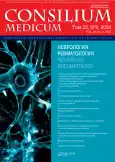Анализ движений больного с постинсультной спастичностью руки при применении ботулинического токсина типа А и мультимодальной стимуляции (клинический случай)
- Авторы: Луцик В.Н.1, Зайцева Е.В.1, Котов С.В.1, Мисиков В.К.1, Бирюкова Е.В.2
-
Учреждения:
- ГБУЗ МО «Московский областной научно-исследовательский клинический институт им. М.Ф. Владимирского»
- ФГБУН «Институт высшей нервной деятельности и нейрофизиологии» РАН
- Выпуск: Том 22, № 9 (2020)
- Страницы: 91-95
- Раздел: Статьи
- URL: https://journals.rcsi.science/2075-1753/article/view/95415
- DOI: https://doi.org/10.26442/20751753.2020.9.200272
- ID: 95415
Цитировать
Полный текст
Аннотация
Полный текст
Открыть статью на сайте журналаОб авторах
Василий Николаевич Луцик
ГБУЗ МО «Московский областной научно-исследовательский клинический институт им. М.Ф. Владимирского»
Email: vasilius_2006@mail.ru
аспирант каф. неврологии Москва, Россия
Елена Викторовна Зайцева
ГБУЗ МО «Московский областной научно-исследовательский клинический институт им. М.Ф. Владимирского»мл. науч. сотр. каф. неврологии Москва, Россия
Сергей Викторович Котов
ГБУЗ МО «Московский областной научно-исследовательский клинический институт им. М.Ф. Владимирского»д-р мед. наук, проф., рук. отд. терапии, зав. каф. неврологии Москва, Россия
Виктор Казбекович Мисиков
ГБУЗ МО «Московский областной научно-исследовательский клинический институт им. М.Ф. Владимирского»канд. мед. наук, доц. каф. неврологии Москва, Россия
Елена Владимировна Бирюкова
ФГБУН «Институт высшей нервной деятельности и нейрофизиологии» РАНканд. биол. наук, ст. науч. сотр. лаб. математической нейробиологии обучения Москва, Россия
Список литературы
- Министерство Здравоохранения Российской Федерации, Департамент мониторинга анализа и стратегического развития здравоохранения, ФГБУ «Центральный научно-исследовательский институт организации и информатизации здравоохранения» Минздрава России. Заболеваемость взрослого населения России в 2015 г. Статистические материалы. Ч. 3. М., 2016.
- Wissel J, Manack A, Braunin M. Toward an epidemiology of poststroke spasticity. Neurology 2013; 80 (Suppl. 2): S13-19.
- Парфенов В.А. Спастичность. В кн.: Применение ботокса (токсина ботулизма типа А) в клинической практике. Руководство для врачей. Под ред. О.Р.Орловой, Н.Н.Яхно. М.: Каталог, 2001; с. 91-122.
- Йост В. Иллюстрированный атлас инъекционного использования ботулинического токсина. Дозировка. Локализация. Применение. М.: Квинтэссенция, 2011.
- Мисиков В.К. Препараты ботулинического токсина типа А в лечении постинсультной спастичности нижней конечности. Клиническое наблюдение. Нервно-мышечные болезни. 2014; 3:49-51.
- Орлова О.Р. Применение ботокса (токсина ботулизма типа А) в клинической практике. Руководство для врачей. Под ред. О.Р.Орловой, Н.Н.Яхно. М.: Каталог, 2001.
- Subramanian SK, Feldman AG, Levin MF. Spasticity may obscure motor learning ability after stroke. J Neurophysiol 2018; 119 (1): 5-20.
- Ang KK, Guan C, Chua KS et al. A clinical study of motor 471 imagery-based brain-computer interface for upper limb robotic rehabilitation. Conf Proc IEEE Eng Med Biol Soc 2009; р. 981-4.
- Ang KK, Guan C, Chua KS et al. Clinical study of neurorehabilitation in stroken using EEG-based motor imagery brain-computer interface with robotic feedback. IEEE Engineering in Medicine and Biology Society. 2010; р. 49-52.
- Ang KK, Guan C, Phua KS et al. Brain-computer interface-based robotic end effector system for wrist and hand rehabilitation: results of a three-armed randomized controlled trial for chronic stroke. Front Neuroeng 2014; 7: 30.
- Ang KK, Chua KS, Phua KS et al. A Randomized Controlled Trial of EEG-Based Motor Imagery Brain-Computer Interface Robotic Rehabilitation for Stroke. Clin EEG Neurosci 2015; 46 (4): 310-20.
- Ramos-Murguialday A, Broetz D, Rea M et al. Brain-machine interface in chronic stroke rehabilitation: a controlled study. Ann Neurol 2013; 74: 100-8.
- Ono T, Shindo K, Kawashima K et al. Brain-computer interface with somatosensory feedback improves functional recovery from severe hemiplegia due to chronic stroke. Front Neuroeng 2014; 7: 7-19.
- Фролов А.А., Бирюкова Е.В., Бобров П.Д. и др. Способ реабилитации больных после инсульта или травмы с использованием роботизированного комплекса, включающего экзоскелет конечности человека, управляемый через интерфейс мозг-компьютер посредством воображения движений. Патент РФ №2622206. Зарегистрирован 13.06.2017. [Frolov A.A., Biriukova E.V., Bobrov P.O. et al. Sposob reabilitatsii bol'nykh posle insul'ta ili travmy s ispol'zovaniem robotizirovannogo kompleksa, vkliuchaiushchego ekzoskelet konechnosti chelo-veka, upravliaemyi cherez interfeis mozg-komp'iuter posredstvom voobrazheniia dvizhenii. Patent RF №2622206. Zaregistrirovan 13.06.2017 (in Russian).]
- Frolov A, Mokienko O, Lukmanov R et al. Post-stroke Rehabilitation Training with a Motor-ImageryBased Brain-Computer Interface (BCI)-Controlled Hand Exoskeleton: A Randomized Controlled Multicenter Trial. Front Neurosci 2017; 11 (400): 1-11.
- Луцик В.Н., Котов С.В., Мисиков В.К. Применение препарата ботулинического токсина типа А (i ncobotul otoxin A) у пациента с постинсультной спастичностыо верхней конечности. Описание клинического случая. Consilium Medicum. 2018; 20 (9): 30-3.
- Alt Murphy MA, Hager CK. Kinematic analysis of the upper extremity after stroke - how far have we reached and what have we grasped? Phys Ther Rev 2015; 20: 137-55.
- Бирюкова Е.В., Павлова О.Г., Курганская М.Е. Восстановление двигательной функции руки с помощью экзоскелета кисти, управляемого интерфейсом «мозг-компьотер». Случай пациента с обширным поражением мозговых структур. Физиология человека. 2016; 42 (1): 19-30.
- Кондур А.А., Бирюкова Е.В., Котов С.В. и др. Кинематический портрет пациента как объективный показатель состояния двигательной функции в процессе нейрореабилитации с использованием экзоскелета руки, управляемого интерфейсом мозг-компьотер. Ученые записки Санкт-Петербургского мед. ун-та им. И.П.Павлова. 2016; 23 (3): 28-31.
- Levin MF. Interjoint coordination during pointing movements is disrupted in spastic hemiparesis. Brain 1996; 119: 281-93.
- Rohrer B, Fasoli S, Krebs HI et al. Submovements grow larger, fewer, and more blended during stroke recovery. Motor Control 2004; 8: 472-83.
- Biryukova EV, Roby-Brami A, Frolov AA, Mokhtari M. Kinematics of human arm reconstructed from Spatial Tracking System recordings. J Biomechanics 2000; 33 (8): 985-95.
- Chang JJ, Wu TI, Wu WL, Su FC. Kinematical measure for spastic reaching in children with cerebral palsy. Clin Biomech 2005; 22 (2): 165-75.
- Bensmail O, Robertson JVG, Fermanian C, Roby-Brami A. Botulinum toxin to treat upper-limb spasticity in hemiparetic patients: analysis of function and kinematics of reaching movements. Neurorehab Neural Repair 2010; 24 (3): 273-81.
Дополнительные файлы





